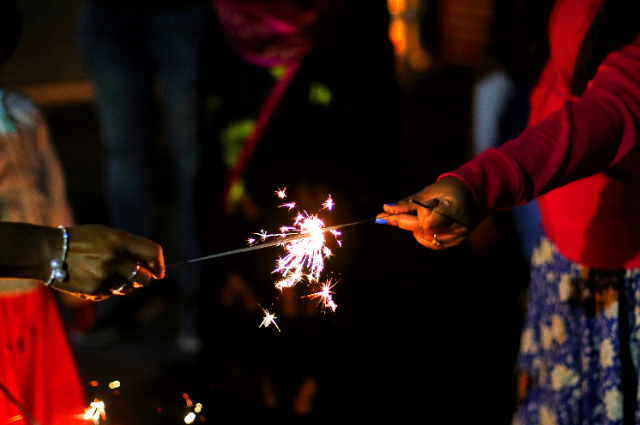
Photo by Venkatesan P on Unsplash
INTRODUCTION:
THE ANNUAL POLLUTION DEBATE
Every year, as the gentle glow of Diwali lamps begins to pierce the evening dusk, a familiar debate resurfaces, woven deeply into the fabric of Indian consciousness. Like a shadow following the light, the discourse around pollution during Diwali is as inevitable as the festival itself. It is a recurring plea, a call to arms, and a reminder of the delicate balance we seem perpetually at odds with.
The air, crisp with the onset of winter, quickly fills with a smoky haze as firecrackers ignite in explosive bursts of color and sound. In these fleeting seconds of beauty, a veil descends over cities and towns, hiding the stars and clouding the night. But the effects last far beyond the evening festivities, lingering in the air, in our lungs, and in the very spaces where we seek solace and joy.
1. The Heightened Awareness and the Annual Reminder
Diwali’s arrival is not just marked by celebrations but by heightened calls for restraint, for reflection, and for responsibility. Social media campaigns gain momentum, urging citizens to celebrate a “green Diwali,” one devoid of firecrackers. Environmental organizations, doctors, and even children lend their voices to this plea, reminding us that a festival of light need not be shrouded in pollution. Each year, the message grows louder, reverberating across platforms and conversations. Yet, the allure of tradition and nostalgia remains potent, challenging these appeals.
2. A Surge in Pollution: The Morning After
The morning after Diwali brings with it a stark reality. Data from pollution monitors paints an unforgiving picture as particulate matter levels soar, often breaching the “hazardous” mark. PM2.5 and PM10 levels—tiny particles capable of penetrating deep into the respiratory system—spike, leading to a visible smog that blurs the skyline. For those with respiratory issues, the day after Diwali can mean difficulty breathing, irritation, and an urgent reminder of the festival’s environmental toll. The clarity of autumn mornings gives way to a dense mist of pollutants, and the air that once carried the scent of celebration now feels heavy with consequence.
3. A Society Divided: Tradition vs. Responsibility
The debate around Diwali pollution reflects a deeper cultural struggle between honoring traditions and embracing modern responsibility. Firecrackers are, for many, synonymous with celebration. They bring memories of childhood laughter, family gatherings, and a sense of festivity that is uniquely Diwali. Yet, as we grow more aware of environmental impacts, there is a tension between preserving this joy and protecting the planet. The annual pollution debate forces society to ask difficult questions about which values we choose to uphold and which we must transform to sustain a livable future.
4. Public Outcry and the Voices of Criticism
As pollution levels spike, so too does the criticism. Voices rise, condemning the use of firecrackers, accusing society of negligence, and questioning our priorities. Health experts warn of the dangers to vulnerable populations, especially children and the elderly. Environmentalists highlight the cumulative damage caused by a single night of celebration. The media amplifies these concerns, creating a palpable urgency, yet each year the cycle repeats, leaving one to wonder: are we truly heeding the message, or simply moving through a predictable pattern of outcry and inaction?
5. A Collective Conundrum: Beyond Individual Actions
The pollution debate reveals an uncomfortable truth: the solution requires more than individual choices; it demands a collective shift in consciousness. If each Diwali the same patterns emerge, it reflects not just the power of tradition but the limits of our current approach. Can society find alternatives that honor the spirit of Diwali while safeguarding the environment? Can joy and restraint coexist? These are questions that return with each annual celebration, waiting for a year when the message is finally embraced, and the air, for once, remains clear.
6. The Need for Consistency and Commitment
As discussions about Diwali pollution intensify, so too does the realization that change requires consistency, not just during Diwali but throughout the year. Pollution is not a seasonal phenomenon. It is a persistent issue that demands vigilance, dedication, and action beyond symbolic gestures. The annual pollution debate serves as a reminder that genuine change comes not from isolated efforts but from a unified commitment to a cleaner, healthier future.
This debate is not just about a single festival or a fleeting moment of enjoyment; it is a call to renew our relationship with nature and to celebrate with responsibility. Only then can we truly honor the spirit of Diwali, not just in joy but in respect for the world around us.
THE ENVIRONMENTAL IMPACT OF DIWALI FIRECRACKERS
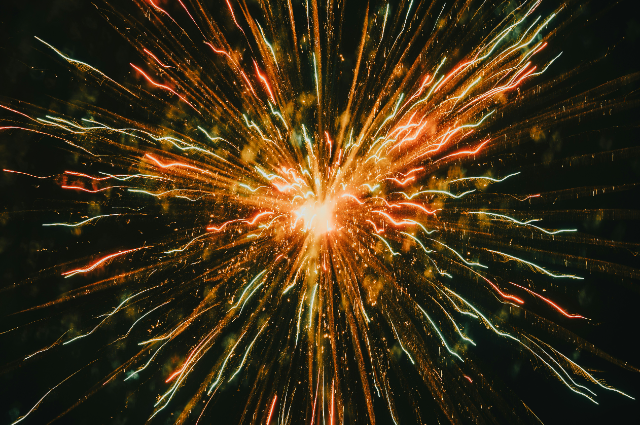
Firecrackers unleash two primary pollutants into the atmosphere—PM2.5 and PM10. These particles, so small that they evade the body's natural defenses, enter the respiratory system, inflicting harm on a cellular level.
- PM2.5, with its microscopic size, can penetrate deep into the lungs, entering the bloodstream and affecting organs far beyond the respiratory tract.
- PM10 particles, though larger, also pose a grave risk, aggravating respiratory diseases and cardiovascular issues.
In 2024, India's major cities saw staggering levels of pollution following Diwali. In the days immediately after the celebrations, cities like Delhi, Mumbai, and Lucknow recorded drastic spikes in air quality indexes (AQIs). According to data, Delhi's AQI reached the hazardous level, with PM2.5 concentrations often exceeding safe limits by over tenfold. The city’s skies darkened, a silent testimony to the invisible particles filling the air, suspended in the wake of a single night’s festivity.
Numbers that Tell a Story:
Data gathered post-Diwali tells a haunting story of environmental compromise. In Delhi, PM2.5 levels surged to over 400 µg/m³ in various regions, a staggering number considering that the World Health Organization’s safe limit is a mere 25 µg/m³. PM10 levels followed a similar trend, with concentrations recorded well above 500 µg/m³, further intensifying the health risks for millions. The air became thick, filled with pollutants that would linger, circulating within crowded cityscapes, amplifying the toll on health for days on end.
It is not only the air that suffers the burden of firecrackers but the very lungs of the population. Hospitals reported increases in respiratory ailments in the days following Diwali. Patients with asthma, chronic obstructive pulmonary disease (COPD), and other respiratory conditions felt the strain as emergency rooms filled with individuals struggling for air. It is a sobering reminder that our celebrations echo in our bodies, especially for the vulnerable—the young, the elderly, and those with pre-existing health conditions.
Ironically, the very holiday meant to bring hope and joy brings with it a sense of collective amnesia each year. We forget, in the blaze of festive joy, the harsh reality of our choices. Firecrackers are lit and skies filled, only for the smog to settle, casting shadows over the day. This pollution lingers long after the festival ends, with pollutants taking days, sometimes even weeks, to dissipate entirely.
Environmental Costs Hidden in the Shadows:
The environmental toll of firecrackers goes beyond air pollution. Chemicals such as sulfur dioxide, nitrogen oxides, and heavy metals are released into the atmosphere. These compounds not only degrade air quality but settle into the soil and water, impacting the ecosystem. Heavy metals, including lead and cadmium, are found in firecrackers and leave toxic residues in the earth, affecting plants, water sources, and animal habitats.
Perhaps the greatest celebration lies in finding harmony—a balance between our traditions and our responsibility to the world that sustains us.
THE INFLUENCE OF CELEBRITIES AND POLITICIANS
In every society, there are voices that echo louder than others—not by virtue of their inherent wisdom, but because of the platforms they possess. Celebrities and politicians, for reasons more complex than mere popularity, are among those voices. They are the figures draped in the glow of fame, where their words are amplified and their actions are scrutinized. And as Diwali approaches each year, they become prophets of a "green Diwali," urging the public to forgo the traditional firecrackers in favor of a quieter, cleaner celebration.
- Each year, leading up to Diwali, celebrities and politicians alike join hands to preach the virtues of an eco-friendly festival. They take to social media, share heartfelt videos, and post images advocating for a pollution-free Diwali.
- Their words are laden with the symbolism of responsibility, cautioning citizens against contributing to the already strained air quality. In urging the masses to avoid firecrackers, they position themselves as protectors of the environment, stewards of a cleaner future.
- It’s a call that resonates because these figures hold sway over millions. Their words carry weight, inviting the public to step back and consider the consequences of a single evening of revelry on the collective health of the nation.
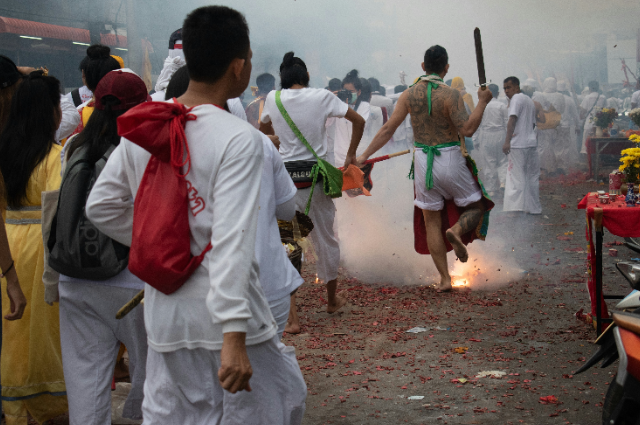
The Power of Their Platforms: Visibility and Reach
- With millions of followers, the reach of these influential figures is undeniable. A single post, a quick video, a tweet—they spread awareness faster than any traditional campaign could.
- Their messages about a green Diwali reverberate through the channels of modern media. For many, these icons shape what is culturally acceptable, especially in an age where influence transcends age, region, and belief.
- In an era where social media amplifies voices to an exponential degree, their appeals are not just suggestions; they become powerful directives that many feel obligated to follow.
Perception as Public Role Models
- When celebrities and politicians speak, they are perceived as bearers of wisdom and social responsibility, individuals who have the privilege of guiding society toward better choices.
- Their green Diwali campaigns encourage a vision of modern India—an India that is aware, educated, and willing to embrace change for the betterment of all. The public looks up to them, sometimes as more than mere entertainers or leaders, but as symbols of hope for a sustainable future.
The Dichotomy of Words and Actions
- However, the public’s admiration is tinged with skepticism. Often, these very same figures—who passionately advocate for environmental consciousness—are seen celebrating with lavish displays, complete with fireworks and grandeur at their personal weddings, political rallies, or film celebrations.
- The contradiction is stark and unsettling, prompting many to wonder if these figures truly believe in the message they espouse or if their calls for a green Diwali are merely another performance in the spectacle of fame and influence.
Influence on Public Behavior: A Mixed Legacy
- Their campaigns have indeed had some positive influence; many citizens, especially the younger generation, now question the need for firecrackers, choosing quieter, greener celebrations.
- Families and communities have embraced alternatives, such as lighting earthen lamps, planting trees, or even donating to environmental causes. In these actions, one can see the flickers of real change inspired by these campaigns.
- Yet, the influence is mixed. The inconsistency between the words of the influential and their private actions has given rise to a degree of public disillusionment. There is a growing awareness that true change must come from a place of sincerity, not mere performance.
The Unseen Shadow: Hypocrisy and Public Distrust
- In every campaign that rises with conviction, there exists a shadow—an underlying dissonance that is hard to ignore. While the public respects the words of their idols, they cannot help but feel betrayed when those very idols celebrate extravagantly, exempt from the standards they urge others to uphold.
- This sense of hypocrisy has fueled a silent backlash. The public, feeling admonished by those who do not follow their own advice, begins to question not only the green Diwali movement but the sincerity of all environmental appeals made by those in the limelight.
As each year passes, Diwali will come and go, and so too will the calls for environmental responsibility. But the truest path forward lies in sincerity—when the influential begin to live their messages, when they inspire not just through words but through the choices they make. Only then will the echo of their voices truly reach the hearts of the people, igniting a flame of change that endures beyond the festival, beyond the season, and into the fabric of everyday life.
INCONSISTENT STANDARDS: WEDDINGS, EVENTS, AND POLITICAL RALLIES

In a world where actions speak louder than words, we find ourselves surrounded by a profound irony—our greatest symbols of power, success, and prestige often mask the very hypocrisy they claim to denounce. Nowhere is this irony more evident than in the selective outrage surrounding fireworks during Diwali, while similar indulgences at celebrity weddings, grand events, and political rallies evade the same level of scrutiny. The air thick with unfiltered smoke becomes a metaphor for an unfiltered truth: those in power seem to play by different rules.
A Tale of Selective Morality
Celebrities and politicians are often seen urging citizens toward a "green Diwali" or a "pollution-free celebration." Their words, laden with an air of responsibility, evoke images of clear skies, safe streets, and a collective commitment to protect our environment. And yet, when these figures celebrate their own milestones, it is as if the rules of nature bend to their will. The very voices that caution against the dangers of pollution are sometimes lost in the thunderous applause for fireworks lighting up private gatherings or lavish political celebrations. For a moment, the message is silenced, replaced by the spectacle of grandeur.
- Take the weddings of well-known celebrities, those whose lives are under constant observation, whose every movement becomes a headline. In these instances, fireworks are not seen as pollutants but as essential elements of a “grand celebration.” The night sky fills with bursts of color, the air with celebratory smoke—a fleeting show for an exclusive audience, with little consideration for the aftermath. And while their fireworks fade, the smoke lingers, settling into the breaths of those who cannot afford to turn away.
The Political Rallies: When Power Celebrates Power
Perhaps even more striking are the firework displays at political rallies, especially in honor of electoral victories or national events. Leaders celebrate with enormous gatherings, filled with passionate supporters and thunderous displays of fireworks. These rallies are framed as symbols of hope and patriotism, and the resulting pollution is conveniently ignored in the pursuit of "greater causes." Here, the same leaders who advocate for cleaner festivals find themselves surrounded by fireworks, their smiles gleaming through clouds of smoke. The silence of critique in such cases hints at a double standard that cuts deep into the core of public trust.
These massive displays are more than mere celebrations—they are symbols of influence, prestige, and unchecked privilege. The air thick with pollution from such displays isn’t condemned, perhaps because it is thought to be a necessary price for grandeur. In this narrative, pollution becomes a mere footnote, overshadowed by the pomp and ceremony, sparing those in power from the accountability they expect from ordinary citizens.
The Lack of Scrutiny: Selective Justice
The lack of scrutiny surrounding these events stems, perhaps, from a cultural reluctance to criticize figures of power, wealth, and status. For a wedding, the narrative is framed around love and joy; for a political victory, it becomes about patriotism and progress. In both cases, pollution is minimized, dismissed as an inevitable cost of celebration. The same public that faces fines, bans, and criticism for celebrating Diwali with fireworks is somehow expected to look the other way when leaders and celebrities break their own rules.
If society truly aims to reduce pollution, if there is a genuine call for cleaner celebrations, then the standards cannot change with the faces. Celebrities and politicians wield influence far greater than ordinary individuals; they are symbols, and their actions send ripples through the collective conscience. Real change demands that those who speak about pollution also embody that commitment in their own lives, celebrations, and victories.
MEDIA AND PUBLIC RESPONSE: MIXED REACTIONS

In the quiet aftermath of Diwali, as the smoke disperses from the city skylines, the stories begin to fill the airwaves and newsfeeds. News channels and social media platforms run extensive campaigns, and the public watches as warnings and reports flood in, bringing a sharp focus on air quality and environmental responsibility.
But there lies an irony beneath this annual scrutiny. The media, vigilant in its calls for restraint during Diwali, often falls silent when fireworks explode in elaborate displays at grand weddings, political rallies, or celebrity celebrations. The difference is stark, almost like a theater stage where some scenes play under intense light while others are hidden in shadow. In this selective spotlight, one begins to see the story of a society grappling with its values and the mirage of its own double standards.
Diwali: An Unwavering Spotlight on Pollution
- Every Diwali, media outlets launch an almost ritualistic focus on pollution, counting the rise in PM2.5 and PM10 levels with meticulous precision.
- Headlines, live coverage, and post-Diwali analysis create an atmosphere where the public feels reminded, almost admonished, to rethink its ways. The airwaves brim with voices of environmental activists, doctors, and concerned citizens, each urging the public to look beyond tradition for the sake of clean air.
- This narrative, however, often positions the common person as the primary bearer of responsibility, as if the pollution crisis were ignited solely by individual actions during a single festive night.
Muted Coverage on Celebrity and Political Celebrations
- In contrast, grand events hosted by celebrities or politicians are often celebrated with the same, if not greater, extravagance, including massive firework displays.
- Media coverage of these events, however, rarely addresses the environmental impact. When it comes to high-profile weddings or political gatherings, the focus shifts to the glamour, the guest list, the spectacle, leaving the clouds of smoke and dust mostly unmentioned.
- This disparity creates an unsettling silence, a gap in narrative where pollution’s presence is acknowledged selectively, further deepening the sense of inequality.
The Subtle Influence of Power and Prestige
- There is an unspoken rule, it seems, about what deserves criticism. Perhaps it is the allure of celebrity, the unchallenged status of political figures, or simply a reluctance to tarnish the glitter of the elite.
- For many in the public eye, their celebrations are shielded, implicitly justified, and rarely scrutinized for their environmental toll. This aura of prestige appears to place certain actions beyond reproach, lending them an almost sanctified exemption from the conversation on pollution.
Public Reaction: Acceptance, Frustration, and Resentment
- When Diwali approaches, social media platforms swell with debates. Some call for restraint, while others, feeling targeted, question why their cultural practices bear such heavy blame.
- Conversely, when fireworks adorn celebrity weddings or political rallies, there is often admiration or excitement, a celebration of the event’s grandeur rather than a call for environmental consciousness. Occasionally, whispers of frustration appear in comments and tweets, subtle reminders from the public that the hypocrisy has not gone unnoticed.
- The double standard sows seeds of resentment, leading to a deepening divide in public sentiment. Some express anger at the perceived inequity, while others resign themselves to an unequal world, where accountability is tiered and rules apply differently depending on one’s place in society.
The Role of Media: Guardians or Selective Critics?
- The media, in theory, serves as a pillar of truth, holding a mirror to society and its actions. Yet, in its selective criticism, the mirror reveals itself to be fractured, reflecting only parts of reality.
- By covering pollution during Diwali more critically than during elite celebrations, the media shapes a narrative where cultural festivities among common people are highlighted as irresponsible, while high-profile events bask in an untouched reverence.
- This selective storytelling raises a question of ethics. Can the media serve as a true guardian of environmental values when it selectively applies its scrutiny?
WHAT WE NEED?
- For India to move forward, there must be a transparent narrative—one that treats all celebrations and events with equal scrutiny and holds every contributor to pollution accountable.
- The media has the power to ignite this change, to look beyond selective criticism and champion a genuine dialogue on environmental responsibility, transcending the allure of the elite and the simplicity of festival blame.
THE CULTURAL DIMENSION AND THE QUESTION OF ACCOUNTABILITY
In today’s age of pressing environmental responsibility, these rituals face increasing scrutiny. Many argue that firecrackers harm the air we breathe, contributing to a pollution crisis that endangers health and clouds our cities in smog. But for others, these concerns collide with cultural identity, where each burst of light is a form of connection to an ancestral past, an honoring of a tradition that has persevered through generations.
Here lies the challenge: how does one balance the cultural essence of Diwali with the undeniable need for environmental caution?
Preserving the Essence of Tradition
Firecrackers during Diwali are not merely an expression of joy—they represent a ritualistic passage of light, sound, and shared experience. The fireworks, in essence, serve as communal storytellers, each explosion marking the resilience of tradition and the collective joy of family, friends, and strangers alike. In advocating for reduced pollution, we are faced with the delicate task of upholding this symbolic beauty without undermining the authenticity of the celebration.
Embracing Eco-Conscious Rituals
The call for eco-friendly Diwali celebrations—whether through silent firecrackers, LED lights, or even digital fireworks—is an effort to blend responsibility with ritual. Yet, some believe that these alternatives lack the depth of experience offered by traditional firecrackers. This transition demands patience, understanding, and innovation to ensure that the heart of Diwali remains vibrant and true, without compromising the earth we share.
The Clash of Generations
For older generations, firecrackers hold nostalgia and sacredness; for the younger, they present an ethical conflict. This intergenerational dialogue has created a pathway for compromise, where awareness grows but so does the reverence for what has always been. The answer may lie not in outright elimination but in mindful moderation, recognizing that Diwali’s beauty is its ability to evolve without losing its soul.
Who Bears the Burden?
As Diwali approaches, an unspoken division appears—a fracture between those who are told to restrain and those who evade the same call. While common citizens face scrutiny for using firecrackers, many prominent figures—celebrities, politicians, industrialists—are rarely criticized for the opulent displays they fund at weddings, events, and political gatherings. Here, accountability blurs, and a subtle double standard creeps into the dialogue on environmental responsibility.
1. Public Figures and Performative Activism
Celebrities and politicians have immense platforms, and when they advocate for eco-friendly celebrations, they wield influence over millions. Yet, when they later host extravagant weddings or rallies filled with fireworks, their previous words seem hollow, mere performances of environmental concern. This inconsistency creates a sense of distrust, where the public begins to question if these calls for restraint are genuine or simply hollow gestures.
2. The Impact of Double Standards
This double standard is more than hypocrisy; it erodes public faith in the very essence of environmental campaigns. When influential figures avoid consequences for their actions, while ordinary citizens are subjected to strict bans and fines, it creates resentment and skepticism. This division ultimately makes it harder for environmental initiatives to gain sincere public support, as people feel that they alone bear the responsibility for changes that should be shared by all.
3. Accountability as Collective Responsibility
For environmental movements to succeed, they must inspire unity, with all levels of society equally committed to change. When accountability is shared, when the wealthy and influential lead by genuine example, environmental responsibility becomes a collective act of stewardship. This, in turn, strengthens public trust and makes people more willing to alter their behaviors for the greater good.
4. The Role of Public Policy in Equity
True progress in combating pollution requires that policies do not discriminate based on influence or wealth. A policy that is not enforced equally only deepens divides and fosters disillusionment. Clear, unbiased regulations that apply to everyone—celebrity and citizen alike—can forge a path to a future where environmental responsibility is a shared commitment.
IMPACT OF FIRECRACKER BANS AND PROMOTING GENUINE ENVIRONMENTAL RESPONSIBILITY
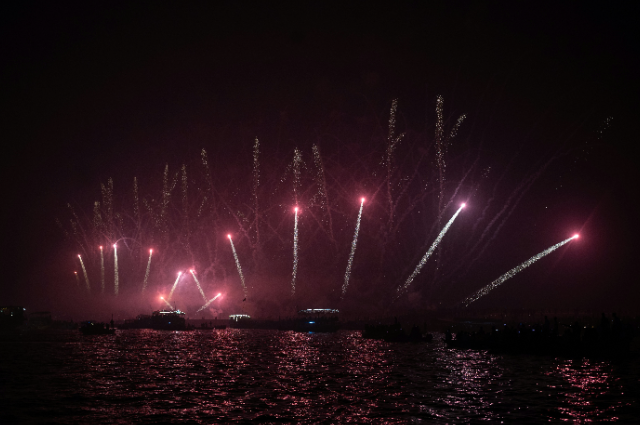
Firecracker bans, though enacted with the noblest of intentions, are often met with mixed results in these sprawling urban landscapes. In theory, these regulations could silence the cacophony of blasts and reduce the toxic haze, offering urbanites a reprieve. However, the reality is complex. Some revelers simply ignore the restrictions, viewing them as an infringement on their rights to tradition, while others find ways to circumvent the bans, obtaining firecrackers through unofficial means. Cities are, after all, places where rules can dissolve in the anonymity of crowds.
1. Enforcement Challenges
Bans are only as effective as their enforcement, and here lies the first great hurdle. To enforce a firecracker ban in a city is akin to trying to hold back a river with bare hands; there are too many currents, too many paths for resistance to flow. Authorities often struggle to monitor every street, alley, and rooftop where fireworks might burst into the sky. Short-staffed law enforcement, coupled with limited technological resources, can scarcely keep up with the sheer volume of activity during festival times.
2. Public Attitudes and Compliance
Many citizens perceive firecrackers as integral to their cultural celebration, seeing bans as an overreach rather than a necessary restraint. There is an irony in the very act of banning—bans create rebels. People, especially those who view their actions as tied to tradition, find ways to express defiance. The question, then, is not just of enforcement but of building understanding and empathy toward the cause. Without a shift in public mindset, restrictions merely become paper walls in the winds of festive freedom.
3. Assessing the Pollution Control Outcome
Even when bans are enforced with some success, the pollution control outcomes can still be disappointingly low. Pollution, like any pervasive issue, does not vanish at the stroke of a policy but diminishes only when sustained changes in behavior align with law. One night of reduced firecrackers does little to change the overall quality of air in cities, where vehicles, factories, and dust continue to poison the atmosphere daily. Thus, firecracker bans address only a fraction of the pollution problem, leaving the larger issues unresolved.
Promoting Genuine Environmental Responsibility
The pursuit of true environmental stewardship goes beyond the empty shell of a ban; it requires a commitment that transcends festive days, manifesting as a deep-rooted respect for the planet. The road to this commitment begins with those in positions of influence—celebrities, politicians, leaders who possess both the voice and reach to inspire meaningful change.
1. Leading by Example
Imagine a world where celebrities and politicians make a vow to celebrate without pollution, embracing the beauty of a quieter, greener Diwali or New Year. Instead of lighting up the skies with fireworks, they could light the homes of those in need, symbolizing joy in ways that cause no harm to the environment. The impact of these choices would echo far beyond their actions, reverberating through the hearts of their followers, fans, and supporters.
2. Substituting Firecrackers with Sustainable Celebrations
Celebrations do not demand the sacrifice of nature’s health; they only ask that joy be genuine. Public figures could champion alternative ways of celebrating—eco-friendly laser light shows, musical gatherings, or communal feasts that highlight tradition without the scars of pollution. By normalizing these alternatives, they could help shift public expectations and make sustainable celebrations the new benchmark.
3. Advocating Year-Round Environmental Care
Environmental advocacy should not be an annual sermon; it is a creed that must echo through the entire year. Leaders could take the initiative to promote cleaner cities by supporting renewable energy initiatives, waste management campaigns, and tree plantation drives. Imagine a politician who, rather than merely appealing to citizens to “go green” during festivals, actively engages in cleaning polluted areas or campaigning for sustainable urban planning. Authentic advocacy, in this form, resonates with people, sparking a desire to participate in a larger, communal effort toward environmental preservation.
4. Educating and Building Awareness
True environmental responsibility is nurtured through understanding. Leaders should encourage educational campaigns that clarify the direct impact of pollution on health, biodiversity, and the very air we breathe. If people understand the link between firecracker smoke and the diseases that it can trigger, they might feel a deeper connection to the cause. Awareness transforms compliance from obligation into conviction, ensuring that eco-friendly practices are upheld not out of fear of punishment but from genuine care.
5. Moving Beyond Performative Activism
Performative activism—the art of speaking out only when the world is watching—is a hollow endeavor. True environmental leaders must not be those who make noise only on social media, but those who make sacrifices quietly, who walk the path consistently, even when the cameras aren’t rolling. The earth does not need heroes for a day; it needs guardians who cherish its beauty daily, not as a trend but as a lifelong commitment.
The bans and restrictions on firecrackers, while steps in the right direction, remain incomplete without the support of authentic environmental stewardship. Urban spaces deserve more than temporary measures; they deserve a unified movement in which every citizen feels responsible for the air they breathe. Let the message be clear: it is not the ban that will save the air, but the choice each individual makes to value the purity of that air over the fleeting flash of a firecracker.
As Paulo Coelho might say, the real revolution lies within. When we recognize that our joy does not need to come at the cost of the earth’s wellbeing, we discover a truer, quieter kind of celebration—one where the beauty is not in what we destroy, but in what we preserve.
CONCLUSION: TOWARD A CONSISTENT AND INCLUSIVE APPROACH
In the quiet aftermath of every celebration, as the embers of our festivities cool and the thick air begins to settle, we are left to confront the invisible footprint we leave on the world. Pollution does not respect the boundaries of time or tradition; it lingers as a silent testimony to the choices we collectively make. In this light, it becomes clear that true change demands more than seasonal resolutions or selective restraint. It calls for a journey of consistent and authentic accountability, one that holds every individual, every family, and every public figure equally responsible.
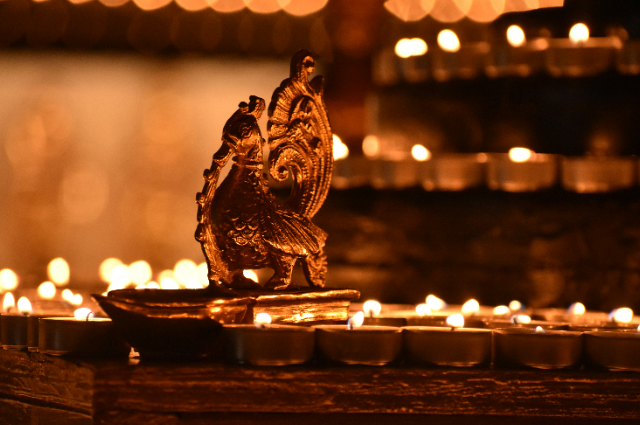
- Accountability Across All Sectors
The weight of responsibility lies not on one group alone but on all of us—ordinary citizens, industry leaders, cultural icons, and political figures. The voices that shape our opinions, the faces we trust and admire, must embrace the same standards they urge upon others. A public figure’s call for environmental caution during Diwali, for example, must extend to every celebration they partake in, from grand weddings to momentous political rallies. True integrity lies in aligning actions with words, for only then can their influence become a source of genuine inspiration. It is not enough to echo the call for a “green Diwali”; we must champion a green life, embracing sustainability in every event and milestone.
- A Collective Commitment to Environmental Stewardship
Imagine a world where every celebration, large or small, is planned with reverence not just for tradition but also for the planet. This vision requires a collective commitment—a promise that transcends the confines of specific festivals. A wedding, a political rally, a sports victory—all should echo with joy, but also with respect for the air we breathe, the earth we tread, and the future we leave behind. If we are to craft a legacy that honors both our culture and our planet, we must embrace this responsibility together, as a community that understands the gravity of its actions.
- A Cleaner, Healthier Environment for All
The ultimate goal is not just a reduction in pollution, but the creation of a space where every breath we take is a testament to our mindful choices. A cleaner environment is not merely a gift to future generations; it is an offering we make to each other today, a commitment to live harmoniously with the earth that sustains us. This is a journey of daily mindfulness, of small, consistent actions taken with a vision of a world where joy and sustainability are inextricably linked.
As we stand at the crossroads between tradition and responsibility, let us choose a path that honors both. Let our celebrations be joyful yet gentle, vibrant yet mindful. For in the quiet of such reverence, we find not only the true spirit of celebration but also the promise of a cleaner, kinder world—one that we, and those who come after us, can cherish with every breath.
